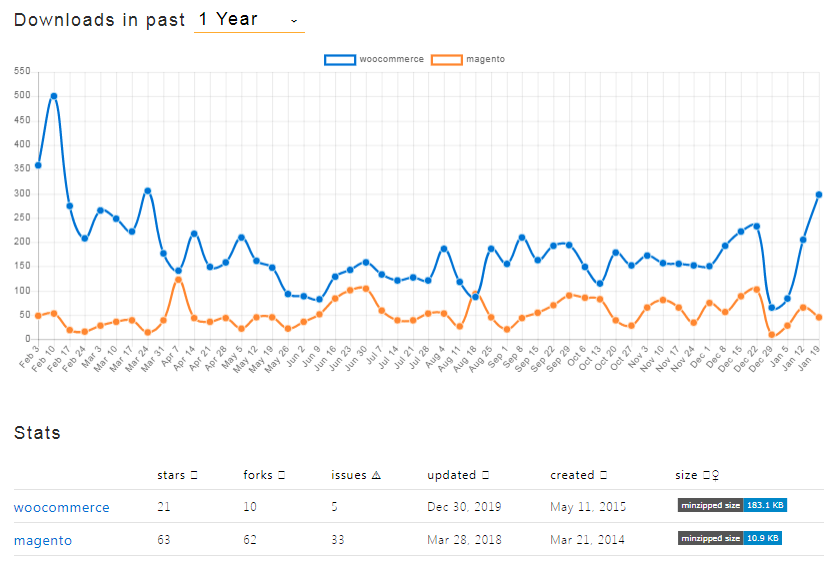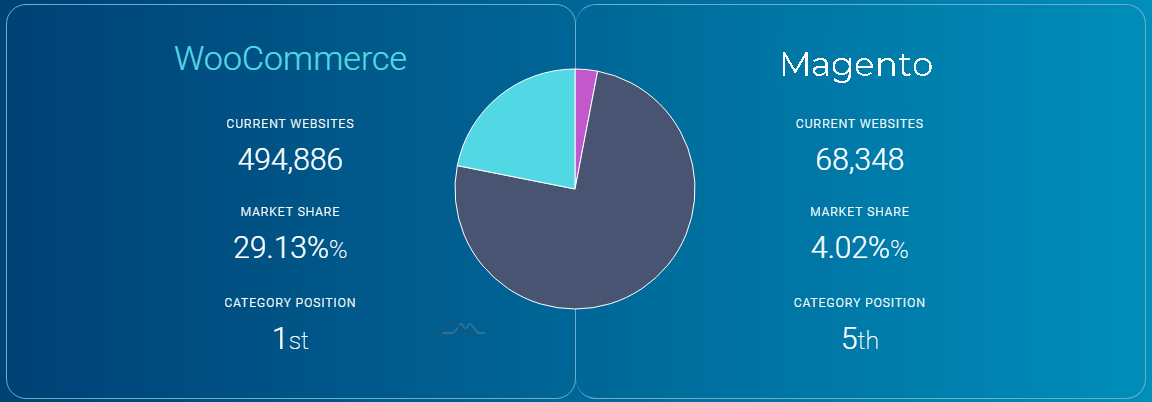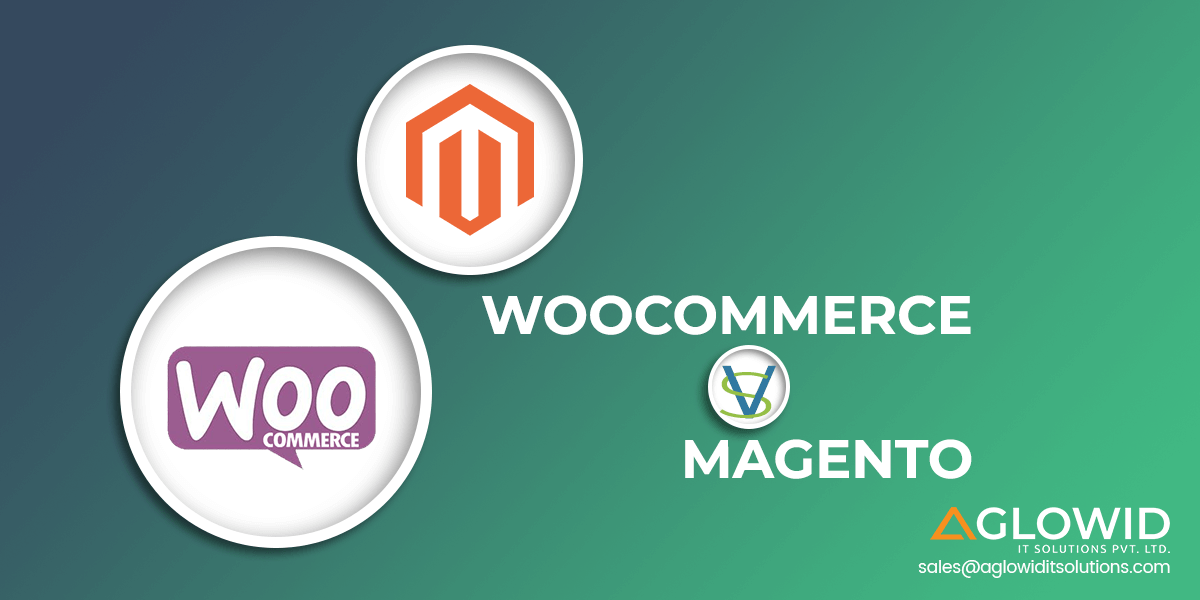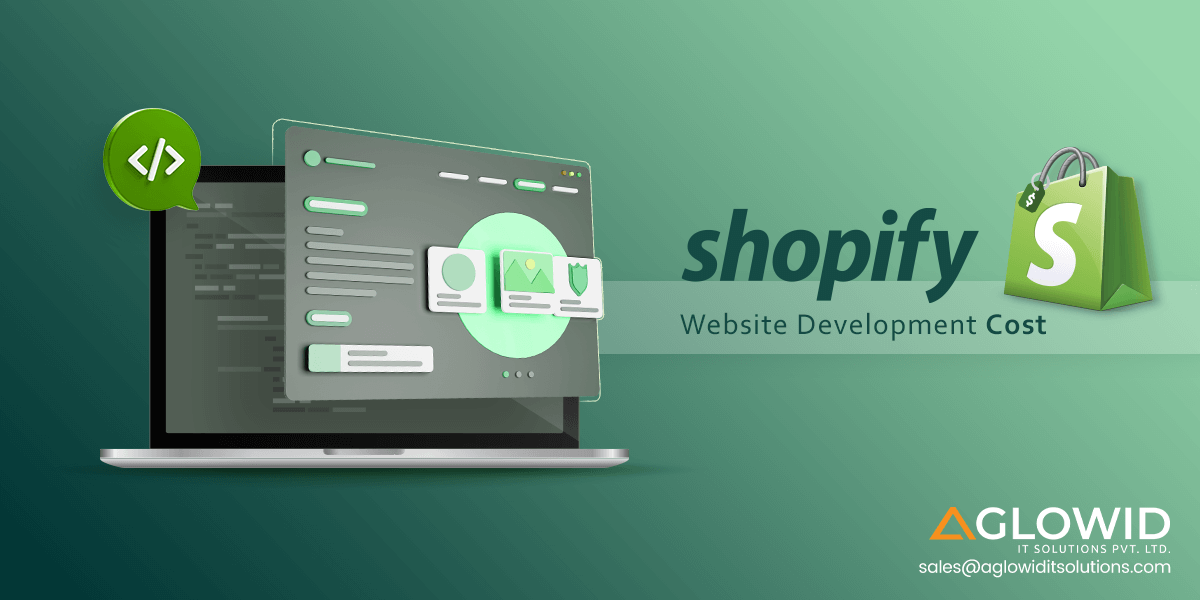When it comes to starting an online business, one has to go through many obstacles, though the first and foremost issue is to choose the right platforms. There are plenty of platforms and choosing the one out of many could be confusing. It may not be possible for individual and business to select unless they go through the list of technologies and understand what these technologies have to offer and what could be drawbacks if they decide to go with the particular platform.
Recently, I had to chance to review and provide competitive analysis between WooCommerce vs Shopify, which was well-received by the readers across the tech arena. Today, I am taking a step forward and have come with the two most promising platforms WooCommerce and Magento.
WooCommerce vs Magento Download Trends
No doubt, WooCommerce has been ruling the roost for the last couple of years, Magento is not less prevalent in the tech arena. As you can see in the NPM Trend of the past six months which show that both have been receiving constant downloads, though WooCommerce has a little edge over Magento in this case. However, if you see this last one-year NPM downloads trends, you will see that Magento is constant while WooCommerce has received a little downfall.
NPM Trends in Past One Year

WooCommerce vs Magento Market Share
With 81,371,945 downloads, WooCommerce has been on the top of the market share list, powering around 28% of all online stores on the Internet.
As far Magento is concerned, it has been constant since its inception and has maintained second place in market share chart till 2017 with 7.91% market share in 2018 and mid-2019. Currently, it is one of five places as per the report showed by Datanyze while WooCommerce is on the top. Let’s take a look at the image below;

Source – Datanyze
The reports make one thing clear that WooCommerce is gaining momentum, but that’s enough to make a decision. Even though the Magento is seen trailing in terms of market share, it is constant and improving gradually while WooCommerce is witnessing vast ups and downs. Yes, they are different technology and serve almost the same purposes on different terms. I shall explain to you the things in detail in the paragraphs given below.
WooCommerce at Glance
Basically, WooCommerce is a plug-in developed to work with WordPress and help business customize its business to achieve the market goal. The objective of the WooCommerce is not to provide a platform to use as the whole solution but to give a set of tools which an individual and business can intergrate it with the existing on the WordPress and make the online store or website even more accessible.
Magento at Glance
Magento is one of the most favored and widely used eCommerce platforms. The platform offers free downloads and allows users to create online stores, sell products and accept payments. However, the platform also provides paid solutions which include premium features, cloud hosting and instant technical support.
WooCommerce Pros and Cons
| WooCommerce Pros | WooCommerce Cons |
| WooCommerce is a plug-in that adds value to your website on WordPress | Not robust database, hence scalability may a concern |
| Open source and relatively cheaper to host, on various terms | You may require additional plugins and that may bring you bugs, if they are updated |
| Easy to get started or begin with | Not abundance in out of the features |
| Easy to learn, lower learning curve as compared to Magento | Large and irritating catalogs, and lacks in strong data capabilities |
| Best suited for a content-focused site | No enterprise edition, only one version for all |
| Enhances WordPress CMS capabilities by leveraging the power | If you have larger site, it will tough to scale through |
| An excellent choice for the portal dealing in eBooks, podcasts and similar products sale | Have a large community, but you have to look for the right support |
| Large community support | Plugin needs to be updated timely |
Magento Pros and Cons
| Magento Pros | Magento Cons |
| Enterprise solution and supports scalability | Typically costly for small businesses and startups |
| Open-source with paid solutions | Steep learning curve than WooCommerce |
| Quality developers and agencies, forming a large community | Week CMS capability may be a concern for content-heavy sites |
| Excellent and out of the box functionalities | Requires high maintenance and even application size is comparatively larger |
| Best suitable for eCommerce products | You need to pay for most of the essential extensions |
| Ease of scalability as it built on MVC framework | Themes for front-end may be complex and complicated |
| Excellent order management | High cost levied over hosting |
Features of WooCommerce vs Magento
| WooCommerce | Magento |
| Setting up a store is free (Open source) | The community version is free, through provide paid solutions as well |
| Get supports for an unlimited number of products | Add as many products as you want |
| Works along with WordPress features and Themes, modular system | Theme based system with decent options |
| Plenty of extensions with ample options | Provide various extensions while supports third-party extensions as well |
| The underlying security is provided while it is dependent on WordPress for the full part | Advanced security features with dedicated patches |
| Comparatively easy to use | Requires, at least basic development knowledge |
WooCommerce vs Magento – Factors to consider
Now, I would like to take you through some of the primary comparisons between the two. We have selected some of the important to compare with. Let’s take a look;
Cost
WooCommerce:
It’s a free plugin for the world largest CMS “WordPress”. All you need to do is to install the plugin to WordPress and start working on it. Almost all and essential features are free, though if you want to have the complete advantage of the features, you need to install the premium features. That will be chargeable. For example, you have payment extensions, and you can accept payment using PayPal and bank transfer, but if you want to have all payment options in your website, then you have pay for the additional extensions. However, WooCommerce has minimal charges over extensions which may not bother you the most.
Magento:
Initially, you don’t have to pay to use. But, as you grow, you will be in need of added extensions, and when you install them, you need to pay handsome bucks on their behalf. You may have to spend around $1000 on extensions. At the same time, you have to hire developers to install and customize them. You have to keep some extra bucks for developers as well. Besides, if you want to have enterprise option to enjoy added perks such as better support, enhanced content management, improved search functionality, etc., then you have to pay $18000 annually.
Plugins and Extensions

WooCommerce: WooCommerce is famous for its massive number of extensions. Importantly, the extensions provided by WooCommerce follow a modular system so that you don’t need to give up the features and plugins of WordPress to them. You have all major and out of the box plugins and extensions to enhance the appearance of the website. They have enough extensions which will be enough for most of the online store. However, if the need arises, you can install additional plugins as there is always an option.
Magento: First off, you can set up a Magento to its basic level by yourself for free. But, it will not be enough for long. It will require a lot of customization if you want to achieve a desirable look. In fact, Magento has already plenty of out of the box features, and you may not need additional extensions. However, when you grow more extensive, you are required to add some additional extensions from its Magento marketplace. That’s where you need to pay some big bucks to install the extensions.
Hosting
WooCommerce: When it comes to hosting, WooCommerce uses WordPress as it is a plugin for the CMS. You don’t have use separate hosting for WooCommerce. More than that, WooCommerce is a small yet efficient plugin which uses less server space and power as compared to other plugins and CMS. Importantly, you can WooCommerce plugin with even shared host. You can upgrade it later if the need arises.
Magento: It requires a lot of server space and computational power as compared to WooCommerce and WordPress. You can find plenty of Magento stores which run poorly. It can create some severe issue for your business. Lousy experience can cost you lose your potential customers. Yes, you have the solutions, and that is to host Magento on a dedicated server, but you have to pay some handsome bucks.

Performance

As far as the performance of the two technologies or eCommerce platform is concerned, it is complex to figure out. The performance of the platform will depend on various factors.
- The store will behave accordingly based on the business specifications
- Size of the application and number functionalities will impact on performance
- Hosting provider plays a crucial role in the performance
- Whether you are using a substantial sized image or optimized image
- In short, the performance will largely depend on the host you use
Support
WooCommerce: WooCommerce offers extensive help with the range of option available. You are likely to get all your question solved in support document given. Besides, as it is the part of WordPress, you have a large community with thousands of world-class professional to help you out with any problem. In case, you are not able to sort the issue out, you can submit a ticket, and a professional will help you short out personally.
Magento: If you are using the community version of Magento, you will get help from the forum only. However, if you want to have dedicated support, you need to upgrade to Magento Enterprise Edition which will cost you around $18000 per year. However, even if you are using the community version, you will not face a serious issue. And, for a common problem, you can find the answer from the forum.

User-Friendly and Ease of Use

WooCommerce: WooCommece is a plugin, and you need to install it. You need to follow five steps to configure, and they are straightforward to handle. Now, if you know how to use WordPress, then things will be easy for you to understand. However, you need to have knowledge of both WooCommerce and WordPress.
Magento: Even though you don’t need to learn two technology separately to use, Magento is a bit complex in terms of user experience. WooCommerce does not require lots of work, while Magento has a steep learning curve.

WooCommerce and Magento are the two different things based on PHP programming language -the first refers to the plugins which work with CMS “WordPress while the latter can be used as a complete solution. Right from opening an online store to managing the store, you have everything in-build with the platform, though Magento requires you to pay more while WooCommerce will be cost-effective.
To decide the right choice WooCommerce vs Magento, you should look over the pros and cons and features of the two platforms and determine what will be better for your business. You can also take help of an expert who are experienced enough to suggest the right option. Your business will be vital here to choose the technology or platform.
Also Check:





 Say
Say